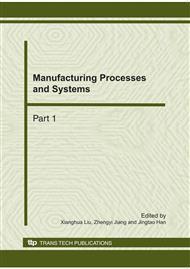p.308
p.312
p.316
p.322
p.326
p.332
p.338
p.342
p.346
Analysis on Thermal Efficiency and Softening Behavior of MIG Welding with Longitudinal Magnetic Field
Abstract:
In the study, thermal efficiency in MIG welding of aluminum alloy with longitudinal magnetic field was analyzed, as well as softening behavior of heat-affected zone (HAZ) and base metal were investigated. The results showed that welding current decreased and resultingly total heat input reduced as the exciting current increased, meanwhile arc thermal efficiency increased and melting efficiency decreased. As a result of action of the magnetic field, the trend of grain growth of HAZ slowed down and the influence on base metal of heat input decreased. When the exciting current was 20A, microhardness of HAZ and base metal improved evidently. However, as the exciting current continued to increase, the effect of magnetic field on softening behavior did not change significantly.
Info:
Periodical:
Pages:
326-331
Citation:
Online since:
October 2010
Authors:
Keywords:
Price:
Сopyright:
© 2011 Trans Tech Publications Ltd. All Rights Reserved
Share:
Citation:


